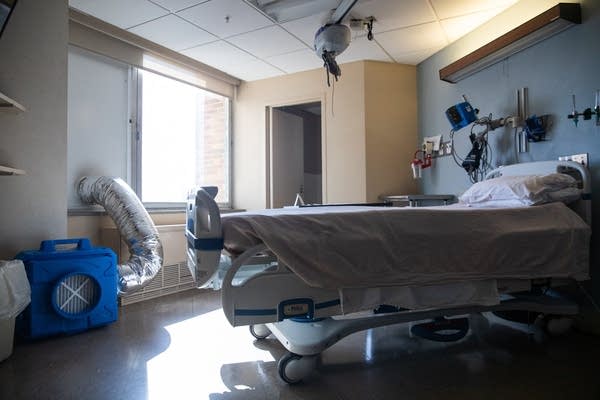Hospitals hit with COVID spike just as staff and beds grow scarce

Go Deeper.
Create an account or log in to save stories.
Like this?
Thanks for liking this story! We have added it to a list of your favorite stories.
Coinciding with a spike in COVID-19 cases due to the delta variant, Minnesota hospitals are seeing the number of beds used by patients tick up. Another problem: not enough health care workers on hand.
Data released Friday shows almost all available Minnesota hospital beds are in use. The state’s Health Department says 95 percent of intensive care unit, or ICU beds are occupied, with 91 percent of hospital beds overall in use. Those numbers are even tighter in the metro area, as cases of COVID-19 again ramp up.
But it isn't just COVID patients needing hospitalization.
"Many of them have observed that folks that are in for other conditions are sicker than typical, likely because, not only because, but certainly a factor has been that a lot of care was deferred during the most intense parts of the pandemic," Minnesota Health Commissioner Jan Malcolm said last week.
Turn Up Your Support
MPR News helps you turn down the noise and build shared understanding. Turn up your support for this public resource and keep trusted journalism accessible to all.
Malcolm said another reason beds are in short supply has to do with the time of year.
"With people out doing a lot of things there tend to be more injuries of one sort or another. So the trauma season is typically quite busy, especially for our trauma centers,” Malcolm said, adding she hopes the season of accidents is almost over.
But COVID-19 still is a significant factor in why health facilities are so busy. Hospitals are seeing patterns among COVID patients.
"For us, we're well over 90 percent of our cases in the hospital, all ages, are unvaccinated," said Dr. George Morris, the physician incident commander for COVID-19 response for CentraCare, a regional health care system in central Minnesota.
Morris said more patients are younger, meaning under age 50. He puts the range at one-third to a half of the population on any given day lately. A year ago, 75 percent of the system’s patients were over the age of 65. Morris said that without a vaccine, they would be seeing more deaths.
When Minnesota faced peaks in COVID cases last year, health officials worried about having enough treatment equipment like ventilators and personal protective equipment for staff. But this time around, the concern is different.
"The single biggest factor is that we are short on staff and that we can't bring in staff,” said Bryan Williams, a critical care pulmonologist and the chief wellbeing officer for M Health Fairview.
"One of the ways we mitigated the challenge last year was to bring in traveling nurses and respiratory therapists from other states,” Williams said. “Other states have either already taken them in or many of them may have decided to sit this wave out."
Some health care professionals have retired, some just needed to step back from the trauma of treating people in a pandemic and many are taking vacations or longer than normal leaves.
"At the beginning of the pandemic, the public was behind health care. And, you know, they flew planes over the hospitals and brought food and, and gave us banners," Williams said.
Hospitals treat patients in the same way they have throughout the pandemic, but it can be demoralizing for staff to see more people struggling to survive after vaccines are widely available.
The misinformation about vaccines wears nurses and doctors down.
"It's not helping us to feel good about our professions or the work we do,” Williams said.
State officials believe Minnesota has days to go before reaching a peak of delta variant-fueled cases.


